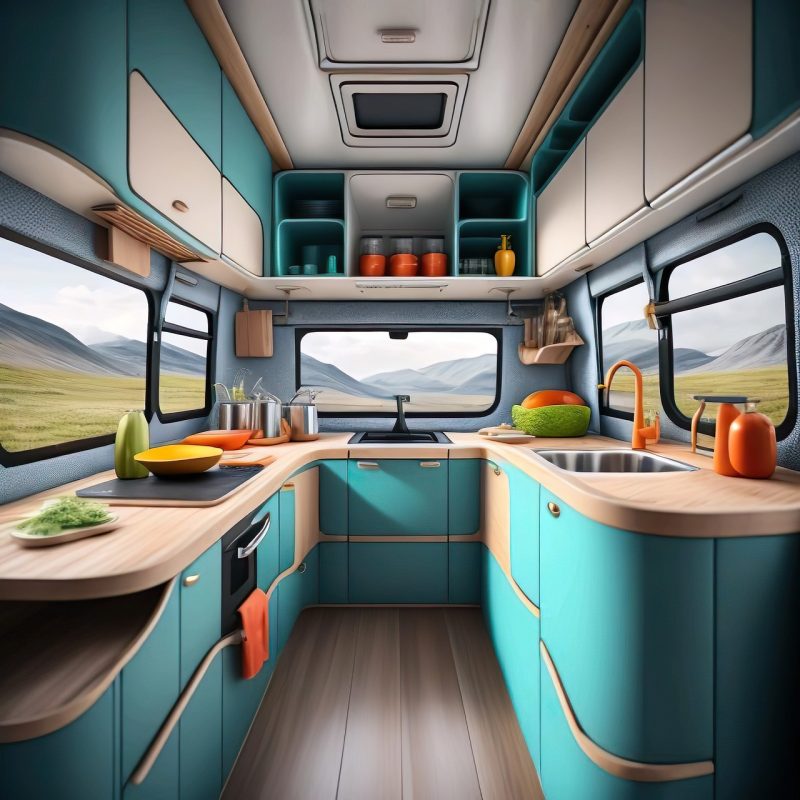In recent years, “van life’, “car life” and “tiny homes” have all become extremely hot topics on social media. Millennials and Generation Z have been particularly eager to try out these “minimalist” lifestyles. At a time when home prices have risen to absurd levels and the cost of living has become exceedingly oppressive, it can be very tempting to adopt a low cost way of life. But it is also important to understand that the elite are very much encouraging these trends. If they could get most of us happily living in tiny homes and electric vehicles, they would be very pleased. You see, the truth is that the smaller our living spaces are, the less carbon emissions we will produce, and that is precisely what they want.
Today, millions of Americans cannot afford to purchase normal homes, and so more of us than ever are turning to “tiny homes”.
A “tiny home” can be anywhere from 100 to 400 square feet, and today Airbnb has thousands of such listings.
It has been reported that 55 percent of tiny home owners are women, and 56 percent of all Americans say that they would actually consider living in a tiny home.
The biggest appeal of living in a tiny home is the cost. It has been estimated that the average cost of a tiny home is just $52,000, and that is “87% cheaper than the average price of a typical U.S. home”…
The average cost of a tiny home is $52,000, 87% cheaper than the average price of a typical U.S. home. Building or buying a tiny house requires far less capital than a standard house. This significant price difference allows more Americans to achieve homeownership without taking on a burdensome mortgage.
If you are very stressed financially, I can definitely understand why such an option would seem appealing.
It is certainly not easy to live a typical middle class lifestyle in today’s world.
One woman that now lives in a 300 square foot home made from straw bales and cob says that her life “looks radically different” compared to when her family was living in a large four bedroom house…
Ten years ago I was living a typical suburban life on the outskirts of Denver. My husband, Casey, and I were both teachers. We lived in a four-bedroom house with a small yard where our two kids liked to play.
Today our life looks radically different. We live entirely off the grid in a 300-square-foot home that we built from straw bales and cob, a natural building material made from soil, water, and other organic matter. We rely on solar power for electricity and rain collection for water, and we use a drop toilet to create “humanure” — compost made from human waste.
If this is what makes her happy, good for her.
But don’t let the elite push you into such a lifestyle.
The elite have been promoting the concept of tiny homes for a very long time. For example, the following comes from the official website of the WEF…
Interest is surging in tiny homes – livable dwelling units that typically measure under 400 square feet. Much of this interest is driven by media coverage that claims that living in tiny homes is good for the planet.
The reason why they love tiny homes so much is because they believe that they are good for the environment.
In fact, the same article that I just quoted above claims that for those that moved into tiny homes “ecological footprints were reduced by about 45% on average”…
I found that among 80 tiny home downsizers located across the United States, ecological footprints were reduced by about 45% on average. Surprisingly, I found that downsizing can influence many parts of one’s lifestyle and reduce impacts on the environment in unexpected ways.
“Van life” is another lifestyle that has become extremely trendy in recent years.
At one time, people looked down on those that “live in a van down by the river”, but now literally millions of Americans are doing it…
“Van life” or “van living” is a term that is becoming more popular around the country. People packing up their lives, moving into a mobile unit and exploring the states.
According to Yahoo Finance, the number of American van lifers has increased by 63% over the last couple of years, going from 1.9 million in 2020, to 3.1 million in 2022.
I was stunned when I first saw those numbers.
Needless to say, not having a mortgage or a rent payment is a big plus.
But there are a lot of negatives to such a lifestyle.
For one woman, regularly using public restrooms was something that she just couldn’t get over when she tried “van life”…
I pulled into a Shell gas station in my rented Ram ProMaster campervan.
Once parked, I headed into the convenience store and beelined to the bathroom.
Inside, there was an impossible-to-describe stench. Toilet paper covered the restroom floor, and pee covered the toilet seat. I used the bathroom as fast as humanly possible.
I certainly can’t blame her.
Most public restrooms along our major highways are simply disgusting.
And as the number of Americans living in their vans has multiplied, many communities have grown tired of them. Here is just one example…
The city of St. Petersburg is working to erase so-called eye sores downtown.
Thursday afternoon, city leaders will take a closer look at “van life” and where drivers can set up camp.
This comes after many complaints came into the city from residents within the city limits who say oversized RVs, large busses and conversion vans are taking up too much space and for too long.
Unfortunately, as economic conditions deteriorate more Americans than ever will be choosing to live in their vehicles.
In fact,”car life” is now being hailed by many on social media as an even cheaper alternative to “van life”…
YouTuber Michael Hickey – likely kicked out of his parent’s basement – built a bed in his 2009 Kia Rio. He said this option allows him to “live rent-free” and travel the country.
In the video, Hickey said the best parking lots to sleep in are ones owned by Cracker Barrel restaurants. He purchases groceries from supermarkets and prepares them right there in the parking lot on a portable stove.
As for showering, he uses a network of Planet Fitness gyms to exercise and shower.
To make money, he works side-gigs, such as DoorDash and Instacart.
Hickey is not alone. Tons of other Gen-Zers post their stories of living in cars on YouTube.
Did you ever imagine that we would see a day when being homeless and living in your vehicle would be considered “trendy”?
But this is where we are at.
Millions of those at the bottom of the economic food chain are trying to make the best of a very bad situation.
Unfortunately, life in America is going to become a lot more harsh during the very painful years that are ahead.
So what will young people start doing once “van life” and “car life” become too expensive?
There is only one more step down, and that is living in the streets…
Michael’s new book entitled “Chaos” is available in paperback and for the Kindle on Amazon.com, and you can check out his new Substack newsletter right here.
About the Author: Michael Snyder’s extremely controversial new book entitled “Chaos” is available in paperback and for the Kindle on Amazon.com. He has also written seven other books that are available on Amazon.com including “End Times”, “7 Year Apocalypse”, “Lost Prophecies Of The Future Of America”, “The Beginning Of The End”, and “Living A Life That Really Matters”. (#CommissionsEarned) When you purchase any of Michael’s books you help to support the work that he is doing. You can also get his articles by email as soon as he publishes them by subscribing to his Substack newsletter. Michael has published thousands of articles on The Economic Collapse Blog, End Of The American Dream and The Most Important News, and he always freely and happily allows others to republish those articles on their own websites. You can connect with Michael on YouTube, Facebook and Twitter, and sharing his articles on your own social media accounts is definitely a great help. These are such troubled times, and people need hope. John 3:16 tells us about the hope that God has given us through Jesus Christ: “For God so loved the world, that he gave his only begotten Son, that whosoever believeth in him should not perish, but have everlasting life.” If you have not already done so, we strongly urge you to invite Jesus Christ to be your Lord and Savior today.

